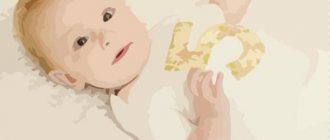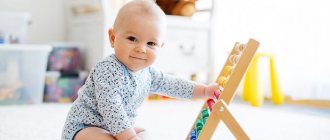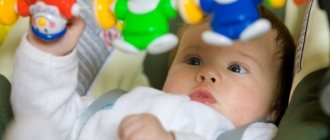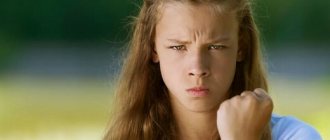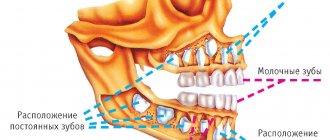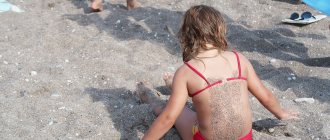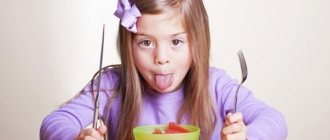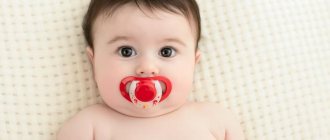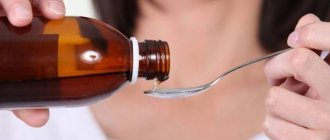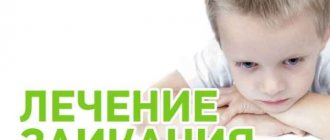15.01.2020
Learning poetry by heart with a 2-3 year old child is very useful for the development of speech, memory, imagination, and replenishment of vocabulary. The baby learns to speak and speak in poetry - a beautiful literary language. Learn poetry with your children, show them how to read them expressively!
With your attitude and involvement, dear mothers, you will instill in your child the right values and accelerate his development.
We have selected a collection of small short poems for our kids. All the poems are funny, understandable to two-year-olds. These poems are also suitable for children 3 years old!
Speech therapy classes at home
Each child is individual. One starts talking early, the other starts talking late. Of course, all parents worry when their 2-year-old toddler doesn’t want to speak at all, but only points his finger. To prevent such incidents from happening, it is necessary to regularly conduct speech therapy sessions with children.
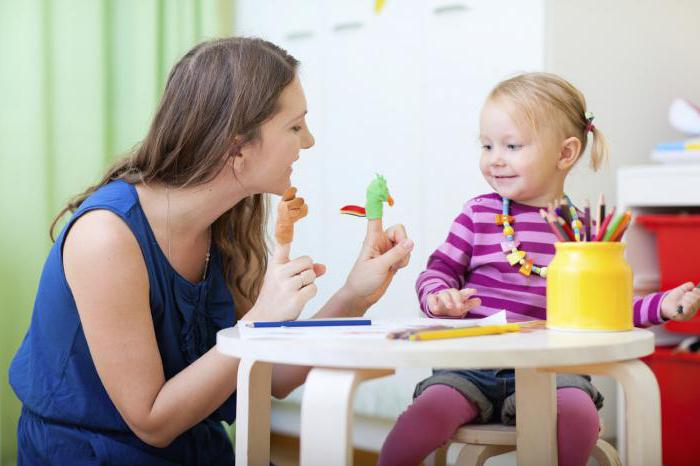
First of all, your child needs regular communication. In order for him to be interested in spending time with adults, he needs to interest the baby. Then speech therapy classes for children will be useful. 2-3 years is the age when a child should be able to speak at least some words. If this does not happen, then pay maximum attention to the exercises.
Most often, activities with children are based on imitation. Kids try to copy those around them. These are actions, words, gestures, facial expressions, etc. A 2-3 year old child is restless and does not know how to concentrate, so it is best to work with him when he wants it. First of all, parents need to achieve emotional contact with the child. When this happens, you can safely engage with your baby, play or just communicate.
What should parents be wary of if the baby has not yet spoken?
People in close proximity: parents, grandparents, for the most part, take a very responsible approach to issues of health and upbringing. While adults recognize ailments associated with various diseases, not everyone is able to identify a child’s silence in time, attributing it to character. A cause for concern is the complete absence of speech, as well as a small number of spoken words. What to pay attention to:
- does not speak a single word a year and does not fulfill simple requests;
- at one and a half years old does not say the words “dad”, “mom”;
- at one year and nine, the vocabulary does not include five meaningful words;
- at two years old does not recognize and does not name people in the photo, does not comply with two-action requests “go into the room and show the toy to dad”, does not name body parts;
- at three years old cannot say his name, does not recite or complete poetry; those around him cannot understand his speech; he speaks too fast or too slow.
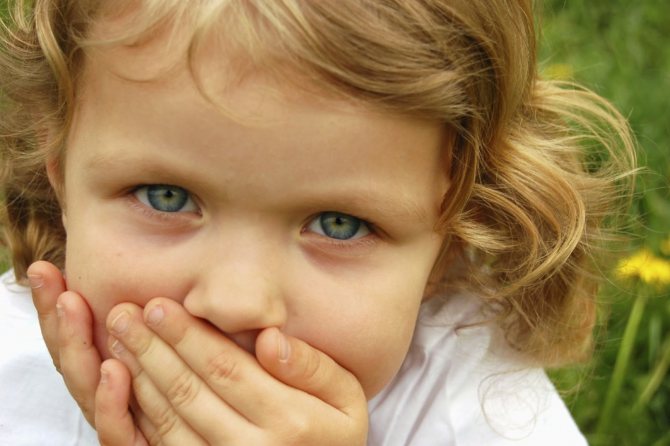
Child with mouth closed
What could be the reason for the baby’s silence?
Important! If the baby does not respond to his name, does not respond to requests and sounds, you need to contact your pediatrician for further referral to a doctor of a more narrow specialization
The reasons for speech delay can be different: from hearing impairment to psycho-emotional disorders of varying degrees. It is necessary to observe the environment in which the child is raised. Is everything okay from the psychological side? He may be silent and speak poorly if he is not interacted with or engaged in activities.
It is also important to know the child’s character: some children are active, inquisitive, and easily find a common language with others. They often start talking early. Other children are contemplative, dreamers; it is difficult for them to adapt to new conditions. They may be silent or speak little due to shyness. Such children need to be given more attention and care.
The main causes of delayed speech development in children
- hearing damage. If the baby does not speak and does not react in any way to speech and sounds, this may be a consequence of otitis media (inflammation of the middle ear). In this case, after examination, the doctor will prescribe the necessary treatment;
- developmental delay due to an immature nervous system. This often happens during premature pregnancy and is detected by specialists in the first days of the baby’s life;
- developmental disorder with mental retardation. Along with other symptoms, it is determined by a specialist;
- lack of motivation. It can happen in families where they are overly protective and anticipate any desires, discouraging him from the need to talk with household members, ask them for anything;
- lack of proper care. When a child is not engaged at all, leaving him to his own devices, he does not develop speech skills and the articulation that accompanies it;
- consequences of psychological trauma. It may be due to early separation from the mother or another person who is in close emotional contact;
- lack of direct communication. A child may remain silent if the parents, due to their heavy workload, simply do not talk to him or utter monosyllabic phrases.
Forming a sound culture of speech to prepare for literacy training
Important! TV does not help children's speech skills
What to do if a child has not started speaking by the age of 2-3?
It is necessary to exclude causes of delayed speech development associated with damage to the hearing, nervous system and mental retardation. Only a doctor can make a diagnosis. Parents need to watch their child a little: under what circumstances does he refuse to speak, what is his vocabulary.
Sometimes you just need to spend more time with your baby, talk, talk about the world around you, read books. It is useful to record new spoken sounds and words in a notebook. If by the age of three the child has not started talking, then consultation with a specialist is required.
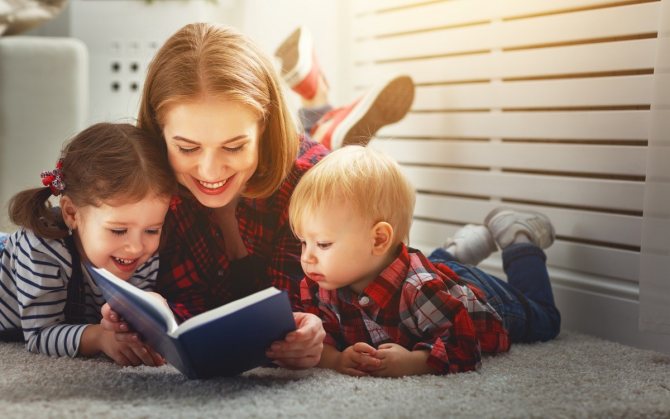
Mom with two children and a book
How to develop speech in children 2–3 years old?
Children perceive the world around them through the main senses, the so-called sensory channel. Therefore, it is necessary to give them information using any kind of sensory sensations:
- The first sense with which a child experiences the world is touch. It is necessary to diversify the baby’s tactile sensations: massage, objects consisting of different structures (wood, plastic, rubber), toys of various shapes, finger paints, sand, cereals, beans, and so on;
- hearing. Among the variety of sounds that you can introduce a child to (music, birdsong, the sound of water), the main one is native speech. If you talk to your baby, pronounce actions, sing songs and nursery rhymes, name surrounding objects, he will react to them and try to imitate them;
- vision. When naming various objects in pictures or in the environment, it is necessary to focus the child’s attention on these objects so that he remembers the names;
- taste. In this case, you need to pronounce the food: “now let’s eat cookies.” Involve the baby in the preparation, for example, when kneading the dough, name the ingredients: “milk”, “flour”;
- fine motor skills. The speech and motor centers in the brain are located nearby. This is why fine motor skills are so important for speech development. It is necessary to add games with small objects, cereals, and legumes to the list of activities with the child; modeling from dough and plasticine, finger painting; unfastening and fastening zippers and buttons.
- Speech. During a conversation, the muscles of the face and neck are activated, and gestures are enhanced. As in the case of muscle training, speech must be developed through regular exercise. To do this, you can do speech gymnastics with your child;
- attention and care. You need to praise your child for his work and achievements; discuss with him all the moments that are happening and answer questions, develop skills.
Teachers include special exercises in their notes on speech development classes.
Important! Correcting mistakes in speech is mandatory. But you need to do this tactfully so that in the future he will not be afraid to utter unfamiliar words.
Warm-up: finger games
Few people believe that fine motor skills develop speech. However, this is scientifically proven. Therefore, try to pay attention to finger games. Here are some examples:
- Place your thumb and index finger together. Let the rest be raised and spread out. Show the children this cockerel, saying: “Our Petya the Cockerel, the golden comb, went to the market and bought one boot.”
- Close your thumb and index fingers and tap them on the table. At this time, say: “The chicken came and found a grain, did not eat it herself, but took it to the children.”
- Close the thumb with the two middle fingers, and simply bend the little finger and index finger slightly, saying: “The mouse is gnawing on the dryers, the cat has come, the mouse has crawled into a hole.”
- Bend your phalanges in different directions, saying: “Our fingers are very friendly, everyone needs them. We need to count the brothers, there are five of them on one hand. There are no less of them on the second, they are all good, because my fingers.”
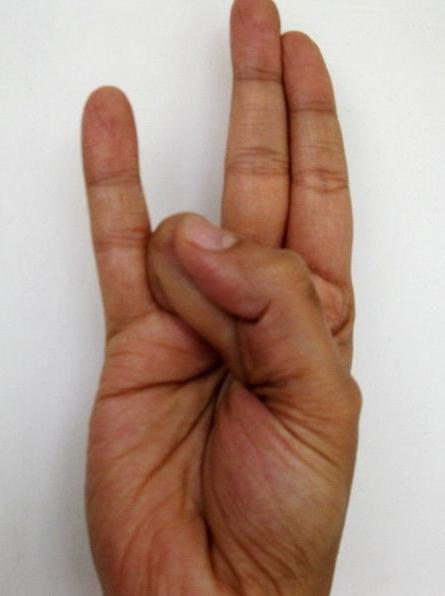
Finger gymnastics is a warm-up that every child needs to get him interested in a further lesson. After all, speech therapy classes for children require perseverance. 2-3 years is the age of fidgets. Therefore, we first interest the baby, and then we begin the exercise.
Articulation gymnastics
Before conducting speech therapy classes for children 2-3 years old at home, it is necessary to develop the muscles of the tongue. This is why articulation gymnastics is needed. It is advisable to carry it out together with the baby in front of the mirror:
- Let the child imagine that the tongue is a brush. His mouth should be slightly open. The tongue should be drawn across the palate towards the throat and back to the teeth.
- Exercise “Tongue on a swing”. At the same time, open your mouth wide. At this time, the tongue lies under the lower teeth. Then lift its tip under the upper teeth. This exercise must be done at least four times.
- "Delicious jam." You need to lick your upper lips first with your tongue, then move on to the lower lips. Do the exercise 5 times.
- Brush your teeth with your tongue. Open your mouth wide. Run the tongue first over the lower teeth, then over the upper teeth. Do this exercise 4-5 times.
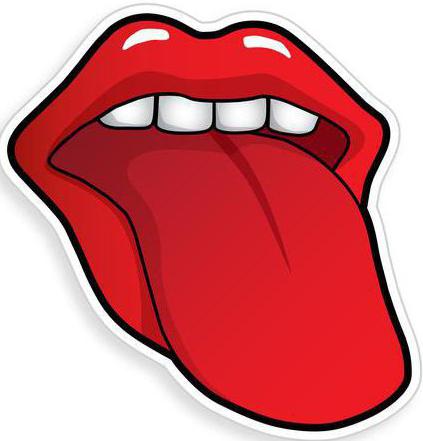
This is how speech therapy classes for children (2-3 years old) are held at home. However, the child will have fun and interest only when you engage with the baby in the game, and not force him.
Onomatopoeia: who sounds? What's knocking?
When you have successfully completed finger and articulation gymnastics, you can begin to study sounds or syllables. To do this, you need to imitate the sounds of animals or objects with your child. Say the following phrases to your baby:
- “Our frog is the head of the swamp, sits on the sand and says: “Kva-kva.”
- “The cockerel was afraid to fall into the river and kept shouting: “Ku-ka-re-ku.”
- “My bell rings ding-ding all day long.”
- “The bunny gnaws the carrot appetizingly and creates a little noise: “Crunch-crunch.”
- “The rain says: “Drip, drip.” You need to take an umbrella with you.”
- “The horse runs merrily and clatters its hooves. This is not a boot, but the sound of a knocking “clack-clack-clack.”
- “The pig says: “Oink-oink, I’ll give you some candy.”
- “The clock gives us a sign of time and it sounds “tick-tock”.”
- “A steam locomotive travels around the world and repeats: “Too-too, I’m going.”
- “Anechka got lost in the forest and called out to her friends: “Ay-ay.”
Speech therapy classes for children (2-3 years old) at home are very useful and exciting. In a playful way, you and your baby can achieve great success.
How to conduct a speech therapy session at home for children 2-3 years old
At two or three years old, the baby cannot sit in one place for a long time. It is better to conduct classes with him only when the baby himself wants.
Important! First of all, it is necessary to establish emotional contact with the baby.
As home exercises for speech development, you can use finger games: you need to put your index finger and thumb together. Leave the remaining fingers straight. It is worth showing the children this cockerel and saying: “Peter the Cockerel, the golden comb, went to the market and bought a boot.”
Games for kids on onomatopoeia
To study sounds and syllables, you can use exercises to imitate the sounds of animals and objects. You can say the following words in a row with your baby:
- the pig repeats: “oink-oink, I’ll give you a liver”;
- a steam locomotive travels around the world and says: “too-too, I’m going”;
- the hare eats carrots with appetite and makes noise: “crunch-crunch”;
- the rain keeps repeating: “drip-drip, you need to take an umbrella with you.”
Developing hearing
Special games are used to train phonemic hearing. Examples of games:
- The child picks up two flags of different colors. For example, green and yellow. It is necessary to explain to the child that when a word is pronounced correctly, a green flag must be raised, and when a word is pronounced incorrectly, a red flag must be raised. For example: dog - tavern - lobaka, etc.;
- You can use pictures. The kid should clap his hands when he sees words in the picture that sound similar.
- Playing teacher. You need to read a fairy tale and intentionally make mistakes in it. The child must correct the adult.
Articulation gymnastics exercises for speech development in children 2-3 years old
During speech therapy classes at home, it is necessary to develop the muscles of the tongue. For this purpose, articulatory gymnastics is used. It is performed in front of a mirror. Exercises:
- the child imagines that the tongue is a brush. The mouth is slightly open. The tongue must be drawn across the palate towards the throat and back;
- mouth open wide. The tongue is located under the lower teeth. Raise the tip of the tongue under the upper teeth and lower it back;
- tongue cleans teeth. The mouth is wide open. First, the tongue passes over the lower teeth, and then over the upper teeth.
Automation of sound C
Replenishing vocabulary: learning poems and tongue twisters
Reading tongue twisters and poems helps to form beautiful and correct speech. They learn to pronounce letters without skipping or swallowing them.
Important! Particular attention should be paid to tongue twisters starting with the letter “P” and hissing ones.
Tongue Twisters:
- Grass in the yard, firewood on the grass.
- Karl stole corals from Clara, Clara stole a clarinet from Karl.
Logorhythmics
Such activities help children not only master speech, but also expand their vocabulary. Speech therapy rhythms develop a child’s motor skills, speech, thinking, memory, and attention. Exercises are given to children from two years old. When your child speaks poorly, let him repeat only what he remembers. If he does not speak at all, then the adult sings, and at this time the child’s hearing develops and his speech reserve is replenished.
Speech therapy classes for children 2-3 years old are interesting and exciting. When you start singing and doing the exercise, the child will become interested, and he will involuntarily begin to repeat after you. There are several exciting games:
- "For a walk". You need to read aloud a verse to which the baby repeats certain movements:
Our legs (stretches palms to legs)
walk along the path (slaps hands on knees).
Over bumps, and over bumps (moves in slow steps)
all the flowers step over (raises his legs high).
- Game "Weather". The child sits on a high chair and listens to slow music. When you say, “It’s raining,” he pats his knees with his palms in rhythm. Hearing the words: “Lightning has appeared,” the baby rings the bell. When you said: “Thunder is thundering,” the child stomps his feet loudly. When the word “silence” is said, the baby becomes silent and sits motionless for a minute.
- Do exercises, saying: “First, we raise our handles “one-two-three”, then we lower our handles. We'll stomp our feet, clap our hands, jump, run, and we'll finish our exercises. And we will begin to walk quietly again.”
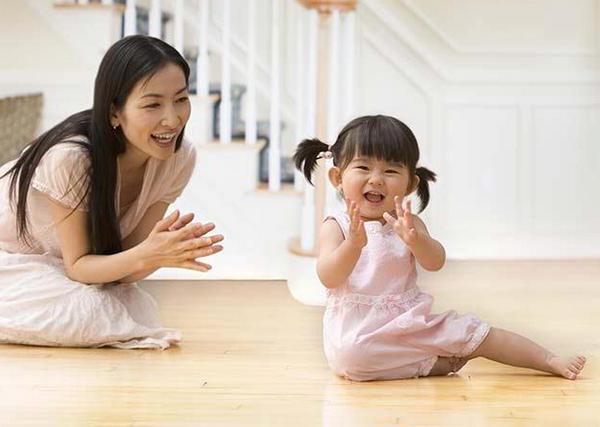
These are interesting speech therapy classes for children 2-3 years old. Exercises should be carried out only with musical accompaniment. Then the child will really like such activities, and he will please you with his successes.
Games for hearing development
These activities are necessary for the child to develop hearing. Children must identify sounds. This could be the sound of rain, thunder, a dog barking or a cat purring, etc. Speech therapy classes with non-speaking children 2-3 years old should be carried out as usual. Remember, this is not a pathology, but most likely laziness, which needs to be overcome with the help of exciting exercises.
Let your baby listen to 2 sounds, for example, a baby crying and a vacuum cleaner running. Let the little one determine who or what is making the sound. When tasks are already easy for him, you can complicate the exercise. Let your baby listen to 3 different sounds, and then 4. If he is in no hurry to speak, then help him and do not scold the baby.
The benefits of finger games, drawing, modeling and other types of children's creativity
Finger games have a positive effect on speech development in children. These can be either story games or drawing, modeling from dough or plasticine. Anyone can do such exercises with a child, and they can have a colossal effect:
- children really like commenting on each change in the position of the fingers (flexion, extension, squeezing), with the recitation of rhymes;
- the child begins to follow the adult’s instructions: “The magpie-crow was cooking porridge” - he understands what action will be next;
- fingers can become original tools for storytelling. “A horned goat is coming” - the child makes “horns” with his fingers. This develops creative abilities, creativity;
- mathematical abilities are being formed: “One, two, three, four, five. The fingers went out for a walk”;
- perseverance and the ability to work carefully and meticulously develop. The child plucks off pieces of plasticine with two fingers, rolls them into balls, and forms them into cakes;
- a creative approach to drawing lifts your spirits. You can use your fingers to draw lines (it’s raining) and make dots (it’s raining drip-drip), draw leaves on the trees
General rules for conducting speech development classes with children 2-3 years old
In order for classes for the development of speech in a 2-year-old child to proceed smoothly, an emotional mood is important. If you are planning a lesson for a group of children, you need to think through its course and structure.
Exercises for home practice on pronouncing the letter P for children
Children at this age do not know how to work in a team, but concentrate on the teacher’s speech. If a parent is taking care of a child, then he himself can find the right moment for classes. It is better not to tell the child that a lesson will be held, but to announce that they will read a fairy tale to him or play with him.
Important! All children have different rates of development. Parents should not teach words at any cost, but should systematically develop their child’s speech.
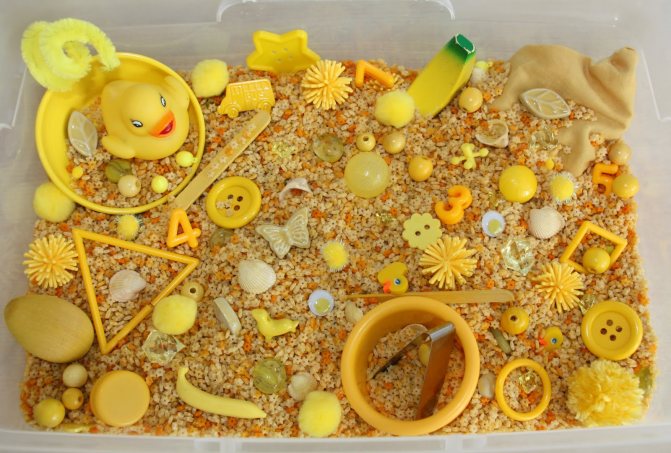
Container with cereal and toys
Poems for speech development
Speech therapist classes for children 2-3 years old can be carried out by parents at home. If you practice with your baby every day, then he will start talking faster than you expect.
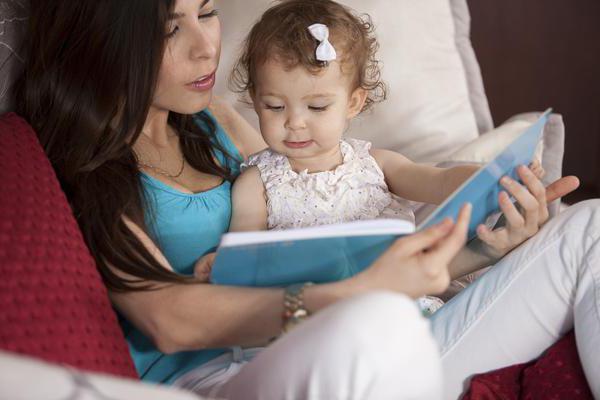
Poems are an integral part of speech development. It is important that there is a simple rhyme, then it will be more interesting for the child to practice:
- “There was a small fight in the river. Something was not shared between the two cancers.”
- “Our dear turtle always hides in her shell out of fear.”
- “Topotushki, topotushki, a bunny is jumping at the edge of the forest. He was tired and sat down and ate a carrot.”
Poems for children 2-3 years old are offered very small so that the child can easily remember them. When you see that the baby begins to recite small rhymes in full, then you can complicate the task.
Toys for children's speech development after 1 year
Matryoshka. In terms of its purpose, a nesting doll is similar to a pyramid, but on a more complex level. Simple manipulations with a nesting doll are accessible even to a child. As you get older, there are more and more options for playing with matryoshka dolls. It helps in mastering ordinal numbers, comparative forms of adjectives, and prepositions.
Musical instruments (xylophone, drum, tambourine). Instruments are necessary to develop a sense of rhythm. Tapping a rhythm and performing movements to a given rhythm plays an important role in the formation of speech processes, in particular, phonemic hearing. Musical instruments will be useful in theatrical performances, as well as in role-playing games.
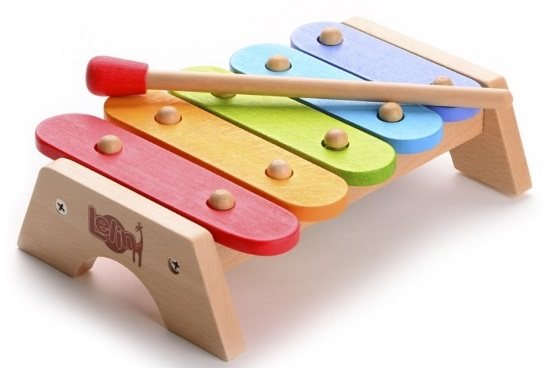
Sorter. With its help, the child learns to correlate three-dimensional figures in shape and size with their flat image. Logic, visual memory, thinking, and fine motor skills develop. The first sorter should have no more than three holes of simple shapes. If there are too many of them, it is difficult for the child to complete the task, and he does not receive satisfaction from the game. When the child learns to cope with a simple sorter, you can increase the number of holes and the variety of shapes.
Insert frames . It is desirable that the elements are the same color and are evenly inserted into place. The child will recognize figures by their contours to form visual images of them. When choosing inserts, you need to pay attention to ensure that you cannot insert the figure incorrectly. When the child can correctly determine the place of the insert in the frame, you can try inserting the figures with their eyes closed, thereby developing tactile sensations, imaginative thinking, and coordination. Speech development occurs: the child first understands and then pronounces independently who or what is in front of him, what properties he has, what actions this item or object can perform. Elements of the inserts can be used in theatrical games and in practicing individual aspects of speech.
Dishes . The process of eating has an important place in people's lives; the strongest feelings are associated with it - hunger and satiety. A significant portion of time is spent on food, so it is important to pay due attention to playing with dishes. In the process of eating, a story game develops, which is a powerful stimulus for the development of speech and thinking. Playing with children's dishes perfectly engages fine motor skills and actively develops sensory sensations. This game promotes the formation of logical operations and develops the skill of simple arithmetic operations.
Figures of animals and people . They allow you to reproduce the real world in the game. The child creates a game world and fills it with characters. This is not only a game, the figures are an ideal aid for development. We cannot do without speech - we name the characters, tell stories about them. By naming animal body parts, you can practice possessive adjectives and write descriptive stories. Animals can be classified according to their mode of movement, habitat, and appearance. When simulating real actions, coherent speech is formed, thinking, imagination, and fantasy develop.
Pure talk
They are also necessary for the development of the baby’s speech. Pure sayings, like poems, should be short and easy to remember:
- “Oh-oh-oh – our cat isn’t so bad.”
- “Uh-uh-uh - our rooster crowed.”
- "Ah-ah-ah - we are standing on our feet."
- “Sha-sha-sha – mom’s noodles turned out delicious.”
- “Shu-shu-shu - I’ll ask daddy.”
- “Shi-shi-shi - how the reeds rustled.”
You can come up with such pure sayings yourself. It all depends on which letters the baby cannot pronounce.
Advice from speech therapists
Nowadays, it is very common to find non-speaking children aged 2-3 years. This does not mean that the child has speech problems. Speech therapists say that there is no need to worry until the age of three. However, speech therapy classes for children still wouldn’t hurt. 2-3 years is an inquisitive age, so kids will be happy to exercise if they are interested.
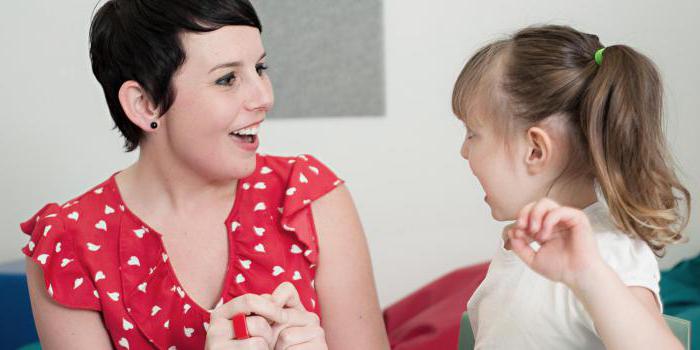
The first few lessons should last no more than 3 minutes. Then you can gradually increase the time. It is important that the baby likes it. If you see that your child is tired and doesn’t want to study, don’t force him. Postpone the exercises until your baby is in the mood for exercise.
It's better to exercise a little every day. Then the baby develops skills, habits and memory. Don't scold him for incorrect movements and pronunciation. Remember, your baby is just learning. Don't discourage him from studying. After all, if you scold and punish, then nothing good will come of it.
Speech therapy exercises for children 2-3 years old
In the second or third year, you can do special speech therapy exercises with your child at home. They develop movements of the lips, tongue and lower jaw. They help strengthen the muscles of the articulatory organs, due to which the appearance of sounds occurs faster. All exercises are performed in front of a mirror.
You can do the following tasks at home:
- bursting of the bubble: the cheeks are inflated as much as possible. Press your palm first on one cheek and then on the other;
- wide smile: lips are drawn out, then you need to smile widely, showing your teeth;
- show your tongue: you need to quickly stick out your tongue and then remove it.
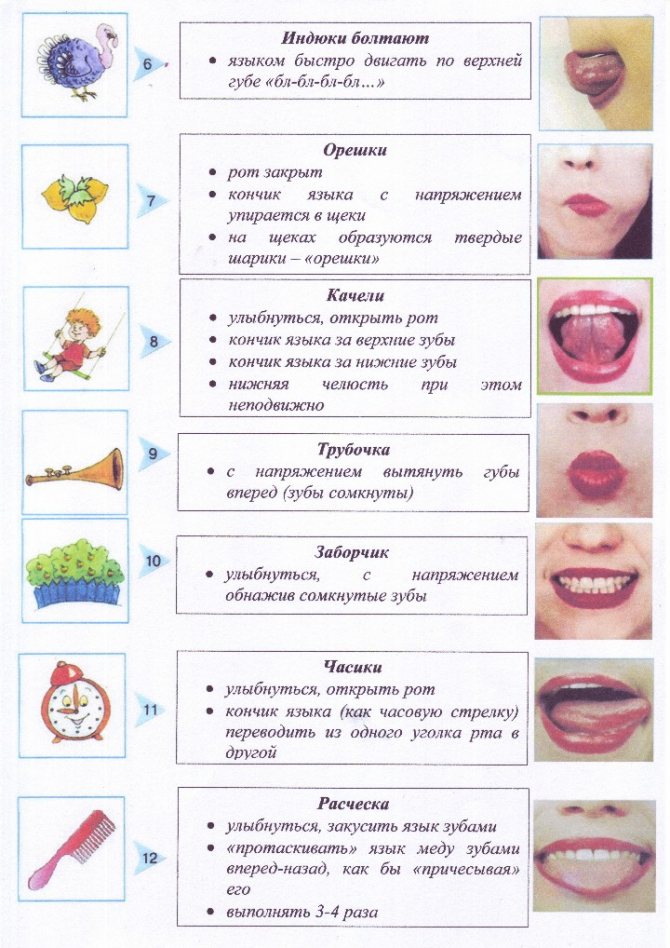
Conducting speech therapy exercises
Speech therapy songs for children 2-3 years old
Speech therapy songs for children 2-3 years old are aimed at automating sounds and clarity of speech. The lyrics and notes of the songs interest children and create a joyful and favorable mood for them. The baby sings along with pleasure, and the activity takes on a cheerful and unobtrusive atmosphere. To conduct classes at home, just download online collections of songs from the Internet.
Integrated lesson on speech development in the preparatory group
Still relevant: Automation of sound J.
